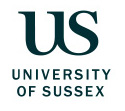Sonic Writing is now out with Bloomsbury Academic. This monograph is the final outcome of an AHRC funded research project that ran between 2016 and 2018. The book is divided into four key parts: instruments (material inscriptions), notation (symbolic inscriptions), recording (signal inscriptions), and new music technologies, or how our analogue and electronic traditions are translated and applied in the design of digital instruments.
Sonic Writing explores the unique relationship we have with our musical instruments - our technologies for making sound. I’ve come to realise there are very few things that humans have such an intimate and caring relationship with as musical instruments. These technologies have evolved over millennia and through instruments, systems design, theory, notation, phonography, computational creativity and now machine learning and AI, music has always been at the cusp of our technological development and understanding. Musical instruments are unique technologies: they are at the same time an instrument to look into our inner self and to speculate about new cultural forms. Sonic Writing tries to understand the role of technologies of music making in wider cultural practices.
As part of this research programme I ran symposia and workshops at STEIM, IRCAM, C4DM, CMC and CNMAT; and a writer’s residency at the Jan Michalski Fondation - all events, places and people that greatly inspired the way the book developed. Through discussions with colleagues working on cutting-edge research, a more refined understanding of the integrated relationship between contemporary music and its technology began to emerge, and I hope I was able to represent that vision in my book.
As part of my travels, I had the opportunity to interview people whose practice shapes the changes I describe in my book. I am extremely grateful to these people: Kristina Andersen, Margaret Birley, Ken Butler, Ed Campion, Suzanne Ciani, Nick Collins, Pierre Couprie, Pete Furniss, Brad Garton, Rama Gottfried, Derek Holzer, Hans Jóhannsson, Shinji Kanki, Roger Linn, James McCartney, Alex McLean, Andrew McPherson, Claudia Molitor, Sarah Nicolls, Godfried-Willem Raes, Christopher Redgate, Ryan Ross Smith, Laetitia Sonami, Laurie Spiegel, Dan Stowell, Bob Sturm, Enrique Tomás, Ge Wang, Anna Xambó, and Pamela Z. I have the feeling that more material will emerge as a result of these interviews.
You can read a sample chapter by clicking on this image:

Although I enjoy writing, initially I wasn’t sure if a printed book would be the right format for this type of research. Perhaps an online publication where I could link to sounds, videos, pictures, and artist websites would be more practical? Where people could comment, add notes, and further contribute to the development of the research. However, in the end the printed book format was simply too attractive, or, as it says in the preface: “there is a quality of the printed format that I value: to constrain, focus, write, rewrite, rehearse, rethink, review, edit and re-edit in an iterative process that involves colleagues, editors, proofreaders, and myself operating in a tradition that extends back to antiquity and is endowed with its own rules, protocols, and formats.” And I don’t regret this decision - hard work, but worth it.
The cover artwork is a piece by Ryan Ross Smith, Study 56. It is an animated notation piece where performers play from a computer generated dynamic score. I think this beautiful still suits the cover of the book, as the book represents a definite moment in time, a snapshot of the dynamic everchaning field of music, just like a screengrab of an animated score. The piece is a generative application, and one rendering of it can be seen here below:
There will be a launch party in the Sussex Humanities Lab on March 14th - all welcome! In addition to drinks and snacks, we will hear music by Feedback Cell, Alex Peverett and Andrew Duff, and Evelyn Ficarra. All of these people have inspired the book, so I’m thrilled to have them performing during the launch.
Bloomsbury gave me a discount code that can be used if you purchase the book on the Bloomsbury website : “GLR MP6”
If you found this post intersting, you can share it or follow me on Twitter!


